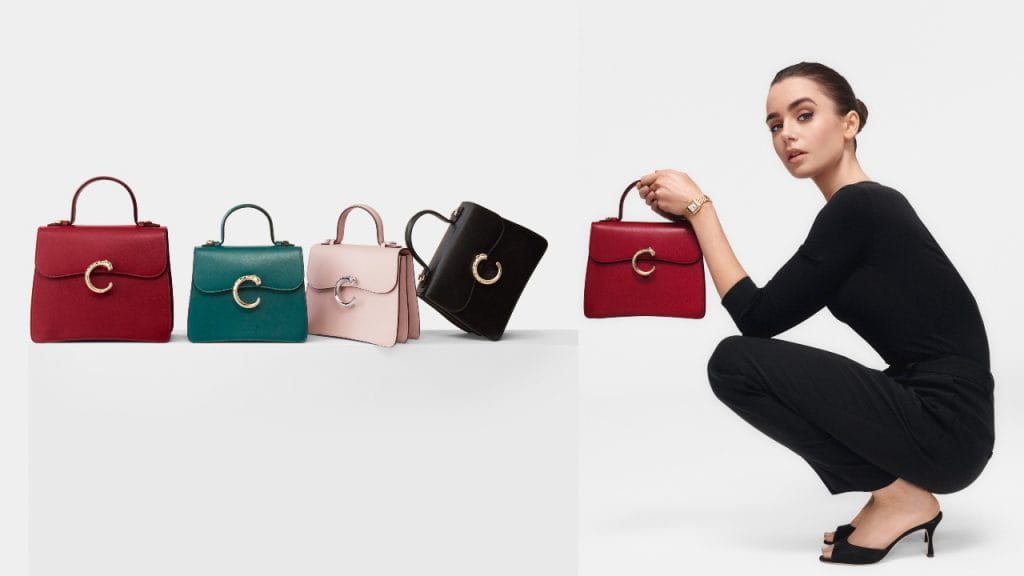In the gilded history of Cartier, the panther shines as the animal personification of the maison’s romance, audacity and heritage. The story begins in 1914, when Louis Cartier – the grandson of founder Louis-Francois Cartier – commissioned illustrator George Barbier to produce the image of a ‘Lady with a Panther’ for an invitation to a jewellery exhibition. In the same year, the panther’s spotted motif appears for the first time with onyx and diamonds on a ladies’ wristwatch. (At Cartier, the panther denotes both the black panther as well as the leopard, the spotted African and Asian variant under the Panthera genus).

A walk through the mists of time will reveal why exactly the panther is such an important symbol of Cartier’s evolution. It mostly begins with one woman Jeanne Toussaint, whose life becomes intertwined with the most formative of years when Cartier emerged as a global icon of prestige, described by King Edward VII as ‘the jeweller of kings and the king of jewellers’. One could surmise that both the 1914 panther-patterned timepiece and illustration are connected, in that Toussaint had been taking on design commissions for Louis Cartier in 1913, while the poster was a tacit acknowledgement of her role as a romantic interest in his life.


Toussaint, whose sense of style and creativity endeared her to Parisian society, was the daughter of Belgian lacemakers who struck out on her own at the age of 15, and eventually found herself in the City of Lights where she would maintain the company of people such as a young Coco Chanel and Louis Cartier. Her romantic relationship with the latter, serving as his muse, would eventually develop into a professional one as she became a creative force within the maison, designing Cartier pieces from jewellery to handbags complete with money clips, compacts and gem-studded lipstick tubes for wealthy heiresses of the 1920s such as Daisy Fellows and Marjorie Merriweather-Post.

Toussaint, affectionately nicknamed “La Panthère” by Louis Cartier, was thought to have acquired this moniker due to her fondness for the feline – reflected in her full-length panther coat, and also her fiercely opinionated and intelligent personality. These qualities and an exotic sense of style would see her embody the role of Cartier’s Director of Fine Jewellery from 1933 up till her retirement in 1970, at the grand old age of 83. Throughout this time, the panther became an integral part of Cartier’s bestiary offerings, with the animal reflected across Cartier’s spectrum of creations. A historical retelling of Toussaint’s encounter with a wild panther while on safari with Louis Cartier relates to her immediate inspiration of “emeralds, onyx, diamonds, a brooch!”

Toussaint’s easy social graces also made the darling of high society, whom she charmed with her fondness for elegance and fine living. The Princess Nina Aga Khan would order of an entire suite of panthère jewels, and French aristocrat Daisy Fellowes – heiress of the Singer sewing machine fortune – purchased a prowling diamond and sapphire panther brooch. The most famous of the lot, however, was the diamond panther atop a one hundred and fifty-two carat Kashmir sapphire, which Toussaint had made as a stock piece but was rightly convinced that Wallis, the Duchess of Windsor would find irresistible.
In years to come, Toussaint’s depiction of the panther’s magnetism and majesty would also lead to French poet Jean Cocteau to claim: “you have set a trend, I shall coin a word: elegant and fortunate women have been definitely affected by panthermania.”
With its bejewelled pieces, Cartier’s various artisans combine varying metiers in a resulting singular vision; utilising gem-mounting, paving, setting to breathe life into the animal. Spots offer volume, while polygonal shapes are employed to portray the panther’s striking feline grace. Just as Toussaint directed her creative team to observe panthers at the zoo to accurately depict them, today’s technological advancement makes it possible to reproduce 3D-printed models which perfectly capture the panther’s essence, a realism which extends to even a silk coat courtesy of Cartier’s “fur” setting.

The maison’s present day Image and Heritage Director Pierre Rainero describes the iconography of the Cartier Panthère as “one which has asserted itself with power and consistency throughout its century. Oscillating between playful and predatory, cruel and kind, it merrily adapts to the stylistic circumstance of the period, taking advantage of it and seizing the spirit of the times like willing prey. Far from a fashion or status symbol, or a mere ornament, the Cartier panther has become a genuine cultural icon.”
The latest in the Panthère de Cartier collection emerges in the form of a new bag, launching this month. Its speckled jewel-like panther bangle clasp is a recall of the Toussaint touch, the result of collaboration between Cartier’s design studio and its high jewellery sculptors. Sinuous lines on the flap are matched with the overall bag structure, a sensual architecture of finely grained – and traceable – leather. Personalisation then comes in the form of initials or dates, and is hot-stamped in gold foil upon the bag or via engraving on the interior mirror. Even as the world turns, this latest release by Cartier is a throwback to a century ago when Toussaint designed the sought-after handbags for the names of the day, embedding function into an irresistible design. With this 2022 edition in the ever-expanding Panthère de Cartier universe, it is topped with a gleaming hand-polished representation of an iconic animal that has come to represent the breadth of Cartier’s interconnected destiny with history’s enigmatic figures and the evolution of style.
The Panthère De Cartier: A Century And Beyond
Click next or swipe the gallery below for more.




























